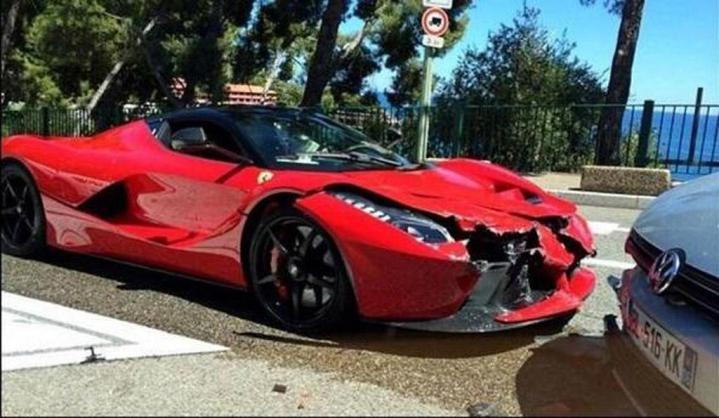
A photo of the wreck was posted online by Twitter user AutoBant, and it shows the $1.4 million hypercar in shambles on the side of the road. It appears to have collided head-on with a Golf, and we’ve learned the crash was severe enough that the airbags in both cars were deployed. It isn’t clear who was at fault, but thankfully, neither party was injured in the crash.
The accident occurred yesterday near the Monte Carlo Country Club, and is the first incident of its kind to occur on a production LaFerrari. Unfortunately, given the extreme power and bravado that comes with this type of car, it probably won’t be the last.
Motor Authority reports that LaFerrari suffered predominantly cosmetic damage, and should be repairable due to its cone-like front design that takes the brunt of front impacts. Still, the lucky/unlucky owner of LaFerrari is in for one hell of a repair bill.

In 2010, some pour soul crashed their Ferrari F430 Scuderia in South Africa, and the bill costed nearly $160,000 (1,696,311 Rand). To be fair, the Scuderia suffered much more extensive damage than LaFerrari, but the parts costs (listed here) are pretty shocking.
A new front bumper? Just over $5,000. A new radiator? Almost $1,000. Even the badge, a metal square smaller than your hand, costs $318. That doesn’t include the labor charge of sticking on the hood, either.
In case you’ve been living under a rock, LaFerrari went on sale earlier this year and features a 950 hp hybrid powertrain. The Italian hypercar accelerates from 0 to 60 mph in 2.9 seconds, but unfortunately the grounded stallion shown above probably won’t be hitting that speed for awhile.
(Photo credit: @AutoBant)


